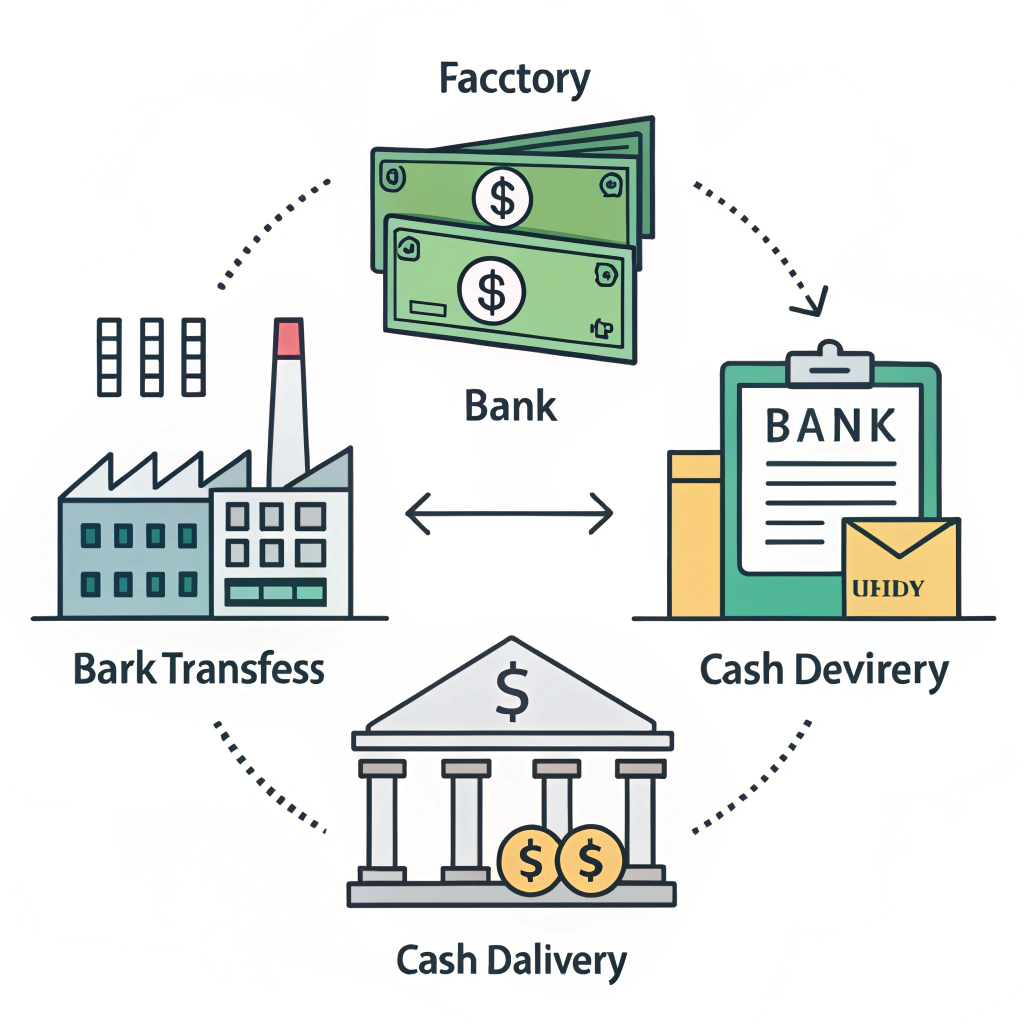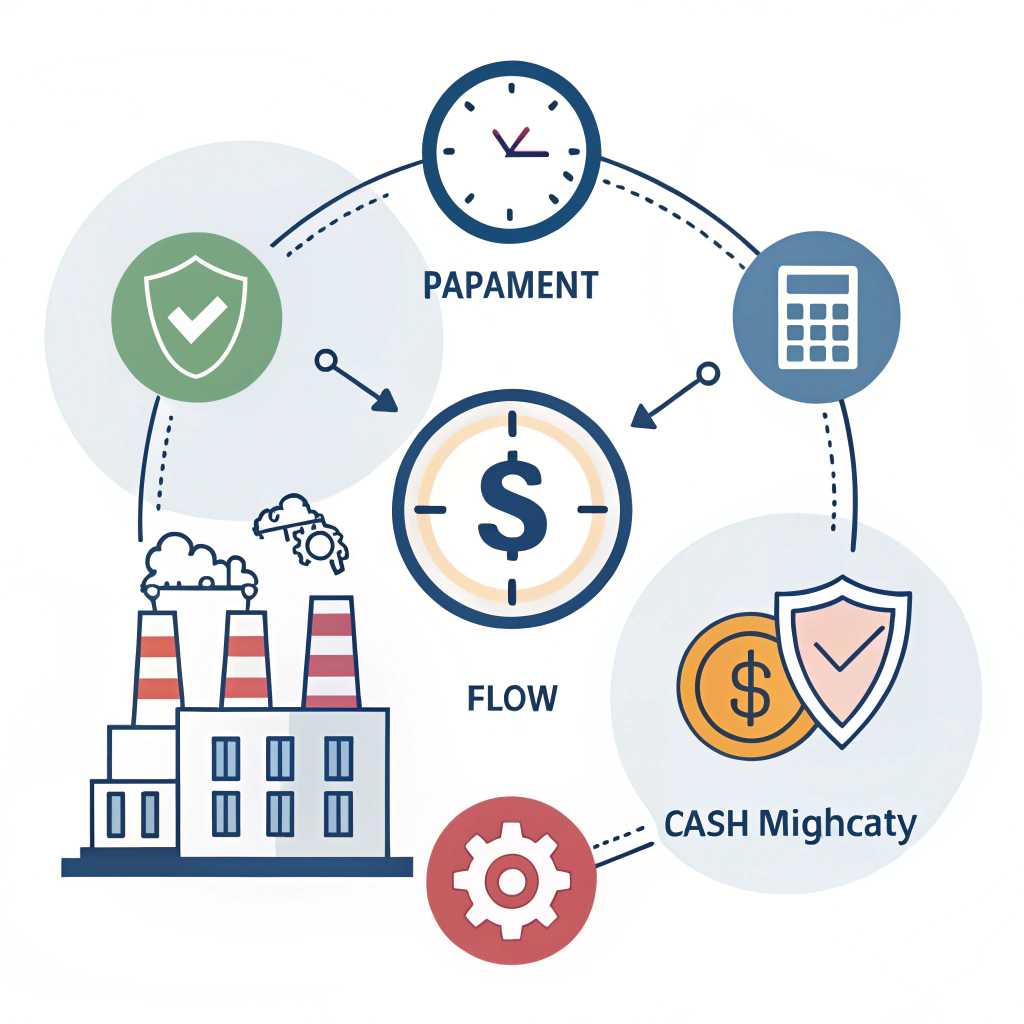Understanding Payment Terms in Pickleball Manufacturing requires clarity on how payments are structured between buyers and manufacturers. At its core, payment terms define the method, timing, and conditions of the payment process. This article explains the various aspects of payment terms in the manufacturing environment, how they mitigate financial risks, and what key factors procurement managers should consider when negotiating with manufacturers.
Payment terms are vital components of manufacturing contracts. They set the guidelines for when payments are made, what amounts are involved, and through which channels the monetary exchange happens. Common elements include:
• Payment Method: Options such as bank transfers, letters of credit1 or cash on delivery.
• Payment Timing: Terms like net 10, net 15, or net 30 designate the period within which payment is expected.
• Discounts and Late Fees: Incentives for early payments and penalties for delays.
• Currency and International Trade: Clarifying which currency is used in transactions to manage exchange rate risks.
For businesses in the pickleball manufacturing industry, understanding these terms is especially crucial due to the complex interplay of international trade, rigorous quality standards, and the need to protect cash flow.
Payment terms in the manufacturing industry can vary widely. When sourcing high-performance pickleball paddles, buyers and manufacturers negotiate terms that balance risk, cash flow, and production efficiency. Below is a table summarizing several prevalent payment terms, along with their pros and cons:
| Payment Term | Description | Advantages | Disadvantages |
|---|---|---|---|
| Advance Payment | Buyer pays before production begins | Low risk for manufacturer; secured funds | Higher risk for buyer if production delays |
| Net 10 / Net 15 | Payment due within 10 or 15 days of invoice | Accelerates cash flow; favorable for suppliers | Short-term cash flow pressure for buyer |
| Net 30 or Longer | Payment due within 30 days or more | More flexibility for buyer’s cash flow management | Delayed revenue for manufacturer |
| Progress Billing2 | Payments in stages based on production milestones | Shared risk; aligns payment with production progress | Requires detailed monitoring of production |
| Letter of Credit | Bank guarantees payment upon meeting terms | Reduces risk; provides security for both parties | Higher bank fees and administrative overhead |
Understanding the benefits and drawbacks of each option helps procurement managers determine the right balance based on their company’s cash flow, risk tolerance, and strategic priorities.
For procurement managers, effective cash flow management is a top priority. Payment terms directly influence working capital and risk exposure:
-
Cash Flow Implications:
Advanced payments and progress billing can lock capital, which may affect a company's operational liquidity. For instance, while paying in advance might secure your order in high-demand times, it ties up cash that could otherwise be used for other operational needs. -
Risk Mitigation:
The use of methods such as letters of credit shifts some risk to financial institutions, ensuring that funds are only released when the manufacturer meets agreed criteria. This can be particularly important in international trade, where differences in legal systems and cultural approaches to contracts can add complexity. -
Payment Flexibility:
Some manufacturers allow a blend of payment methods. For example, a portion of the total cost may be paid upfront (to cover the cost of raw materials), while the balance is payable upon delivery or after a quality check. This flexibility helps in managing unforeseen issues during production, like supply chain delays or changes in raw material costs.
When negotiating payment terms in pickleball manufacturing, professionals consider both internal policy and the manufacturing partner’s practices. Here are key discussion points:
Clearly defined milestones in the production process ensure that payments are aligned with progress. This might include:
• Design approval
• Material procurement confirmation
• Production start
• Quality control checkpoints
• Final delivery
Defining these points in the contract helps prevent disputes and allows both parties to track progress.
Selecting the appropriate payment method is crucial. Bank transfers are commonly used for their simplicity, but a letter of credit1 might be better when extra security is needed. Here are common practices:
- For initial orders or trial runs, a higher advance payment might be acceptable, given the manufacturer’s need to secure materials.
- For regular orders, negotiating net payment terms (like net 15 or net 30) can allow for smoother cash flow management, but buyers must ensure that the manufacturer has a robust production track record.
- Progress billing, combined with periodic quality inspections, reduces the risk of non-compliance with contract specifications.
International transactions require careful currency selection and hedge strategies. Always confirm:
• The currency in which payments are to be made
• The method for handling potential fluctuations in exchange rates
• Any additional fees for currency conversion
Properly addressing these details can prevent unexpected costs and ensure steady supply chain operations.
4. Trade Financing3 Options
In scenarios where upfront payments are significant, options like trade financing become appealing. Trade financing involves third-party institutions that help cover the gap between order placement and invoice payment. This provides benefits such as:
• Mitigation of financial exposure
• Extended payment periods without impacting supply continuity
• Better supplier relationships due to reliable payment systems
By leveraging these financial tools, companies can maintain healthy cash flow while ensuring that production schedules are adhered to.
The global nature of the pickleball manufacturing industry demands a thorough understanding of trade compliance and international payment structures. Incoterms4, a series of international commercial terms, often play a significant role in determining responsibilities related to shipping, insurance, and payment responsibilities. Key considerations include:
• Risk Transfer: Incoterms clarify when risk transfers from the manufacturer to the buyer.
• Responsibility for Costs: Terms such as CFR (Cost and Freight) or CIP (Carriage and Insurance Paid To) define who pays for shipping and insurance.
• Dispute Resolution: Clear Incoterms ensure that both parties have a common understanding of liability in case of shipping delays or product damages.
For procurement managers, aligning payment terms with Incoterms not only secures transactions but also ensures compliance with international trade regulations.
To ensure your agreements in pickleball manufacturing are secure and beneficial, consider these actionable steps:
-
Perform Due Diligence5:
Conduct a thorough background check of potential manufacturers. Verify past performance, financial stability, and customer reviews. -
Negotiate Payment Milestones:
Set clear and realistic milestones corresponding to each phase of production. Include quality control measures and delivery checkpoints in the agreement. -
Incorporate Risk Mitigation Instruments:
Use letters of credit, escrow accounts, or other financial tools to minimize risk exposure. This protects both your investment and the manufacturer’s interest. -
Outline Contingency Plans:
Agree on dispute resolution mechanisms and contingency plans for unforeseen delays or quality issues. This could include arbitration clauses or predefined penalty rates. -
Regular Reviews and Audits:
Establish processes for periodic review of payment practices and compliance audits. This ensures that all terms remain relevant and are adhered to throughout the contract duration. -
Customize Terms Based on Order Size:
For high-volume orders, consider offering better payment terms to secure loyalty and negotiate pricing discounts. Conversely, for smaller orders or trial runs, stricter payment terms might be beneficial.
Imagine a sports equipment firm planning to place an order for high-performance pickleball paddles. The manufacturer, renowned for its innovative materials and precision production processes, requires an initial advance payment to cover material costs. The buyer negotiates a deal where 30% is paid upfront, 40% upon completion of the first production milestone (post material verification), and the remaining 30% upon final delivery and quality inspection.
In addition, both parties agree on a net 15 payment term for the progress billing segments. The agreement specifies penalties for delays and includes a clause for revision in case of extraordinary market fluctuations. Furthermore, to mitigate the risk of cross-border transactions, a letter of credit is arranged through a trusted bank. This multi-layered approach balances risk, ensures quality, and maintains healthy cash flow.
Understanding and effectively negotiating payment terms is critical in pickleball manufacturing. The complexity of international trade, coupled with the premium nature of high-performance paddles, necessitates a comprehensive approach that includes:
• Adoption of appropriate payment methods such as bank transfers or letters of credit1
• Clear articulation of payment schedules, particularly around milestones and progress billing
• Inclusion of safeguards like trade financing and clearly defined Incoterms
• Regular reviews and adaptation of terms to align with market conditions and production realities
For procurement managers, having a well-defined payment term structure is not just about minimizing risk—it’s about forging a strong, mutually beneficial relationship with manufacturing partners. Armed with the insights provided in this article, decision-makers can confidently evaluate payment terms, ensuring that all aspects of the transaction align with both strategic and operational goals. Ultimately, this leads to more secure investments, better supply chain integrity, and a competitive edge in the dynamic sports equipment market.
• How to understand payment terms?
Payment terms set the guidelines for when and how payments are made in a contract. They typically include the payment method, instructional milestones, the payment timeline (such as net 10 or net 30), discounts, late fees, and specify the currency used. These terms are crucial for managing risk and ensuring smooth financial transactions.
• What are the payment terms conditions?
Payment terms conditions are the specific contractual details that define the amount to be paid, the time and method of payment, and any additional rules, such as discounts or penalties for late payments. They provide clear guidance on the financial obligations of both parties in a transaction.
• What are net 15 payment terms?
Net 15 payment terms indicate that the total invoice amount must be paid within 15 days of the invoice date. This term is commonly used to accelerate cash flow, ensuring that suppliers receive payment promptly while also maintaining a strict payment schedule for buyers.
-
letters of credit: Read the article to understand how letters of credit work as a secure payment guarantee, reducing risk by ensuring payment is made only upon fulfillment of agreed conditions. ↩ ↩ ↩2 ↩3
-
Progress Billing: Read the article to learn how progress billing helps align payments with production milestones, allowing risk-sharing and better cash flow management between parties. ↩ ↩
-
Trade Financing: Click to discover trade financing solutions that bridge the gap between order placement and payment, providing liquidity and building stronger supplier relationships. ↩ ↩
-
Incoterms: Click to explore how Incoterms define international shipping responsibilities, risk transfer, and cost allocation, ensuring smoother cross-border transactions. ↩ ↩
-
Due Diligence: Read more about due diligence to know how to effectively assess manufacturer credibility, ensuring financial stability and minimizing investment risks. ↩ ↩







